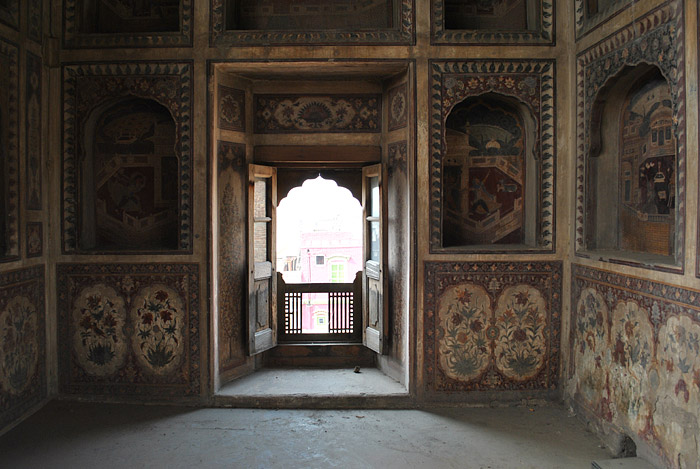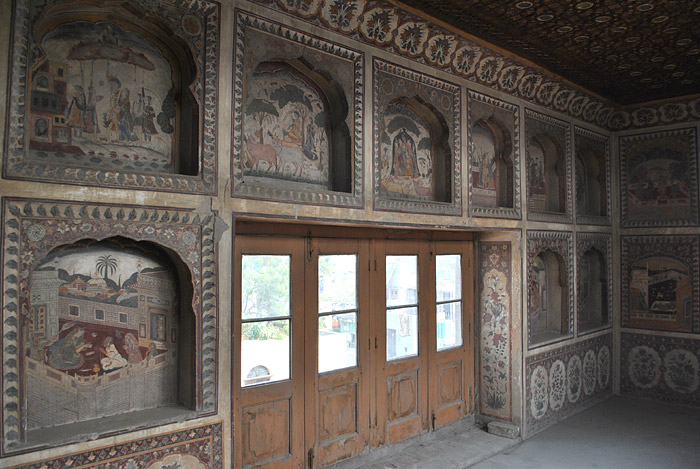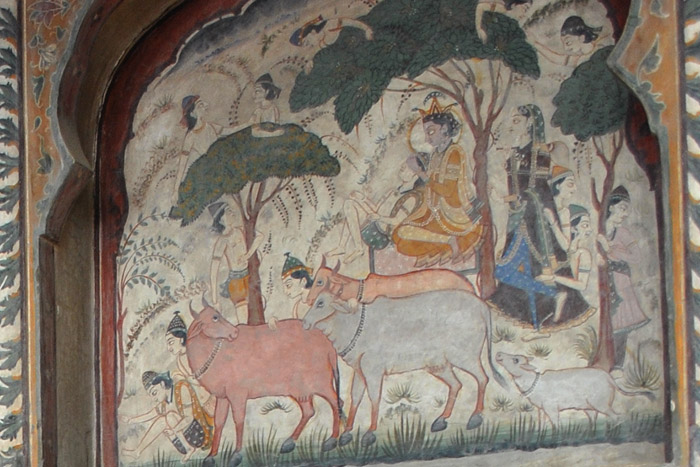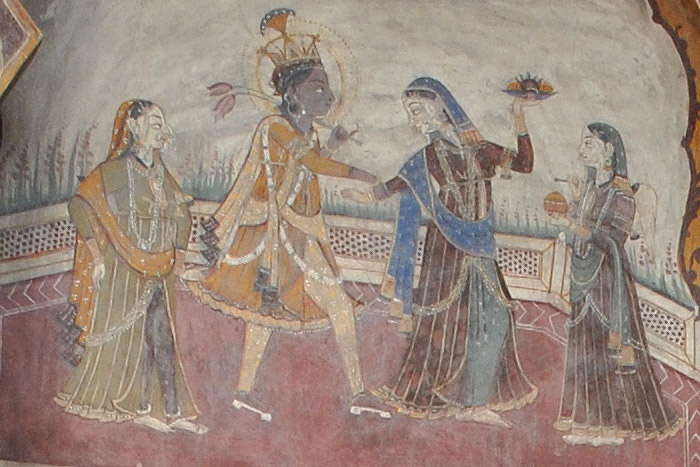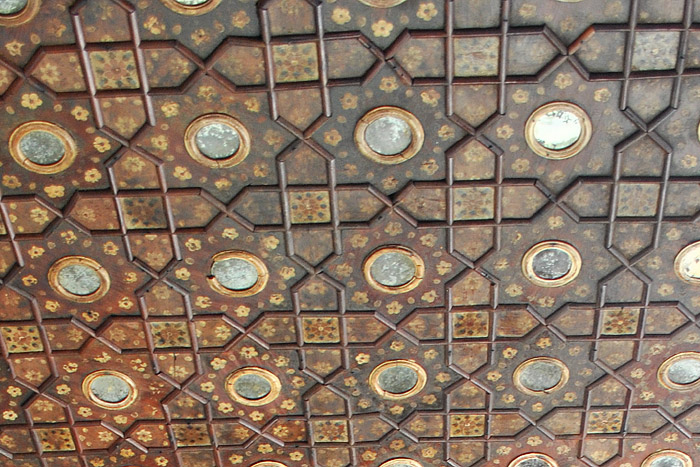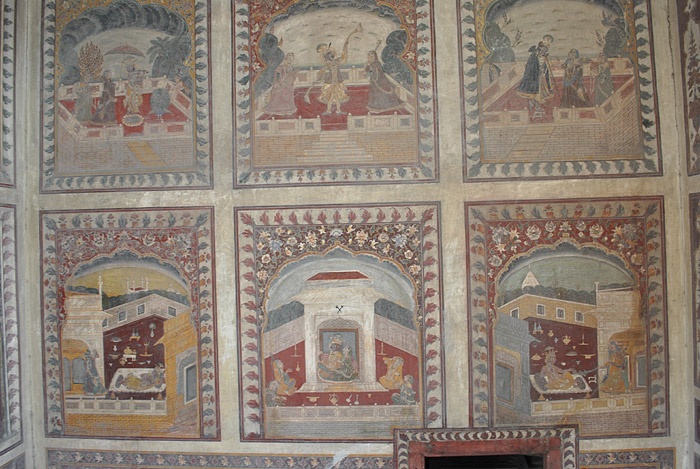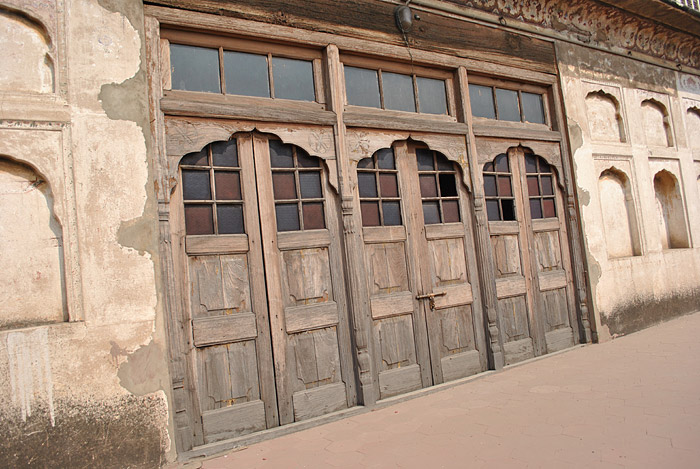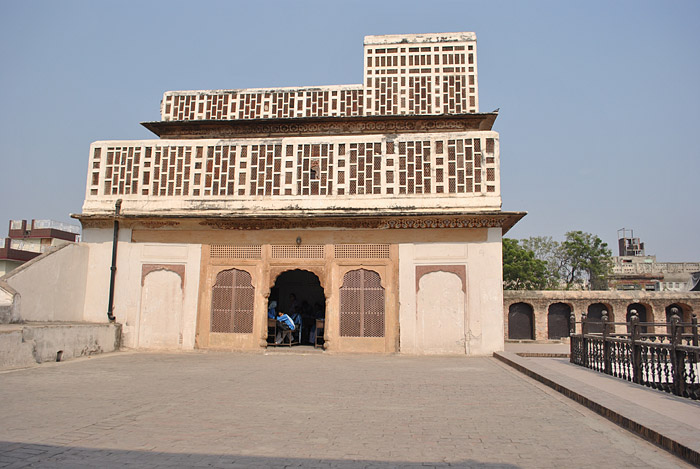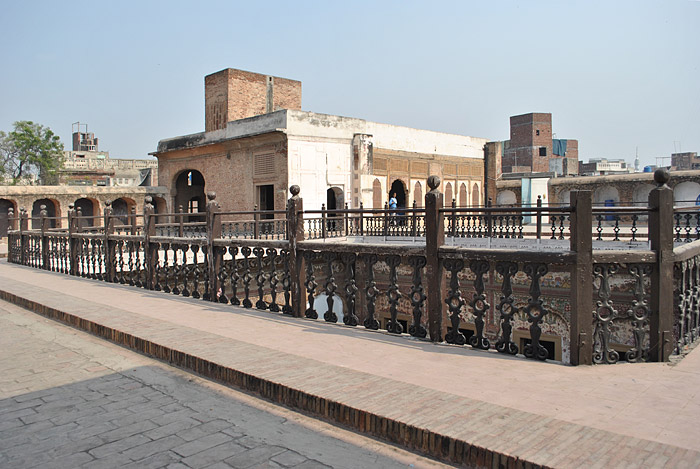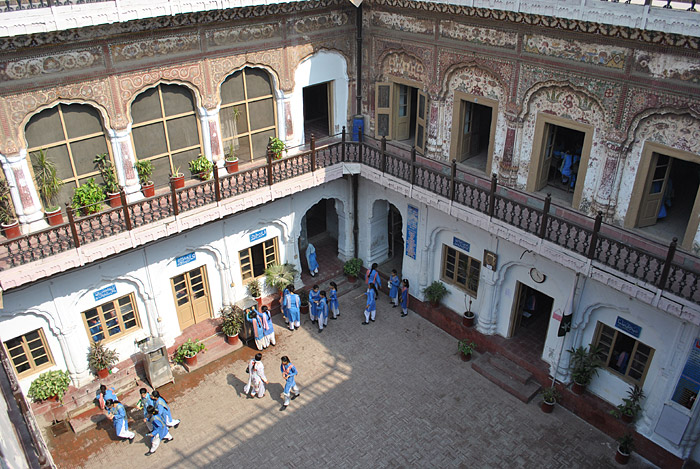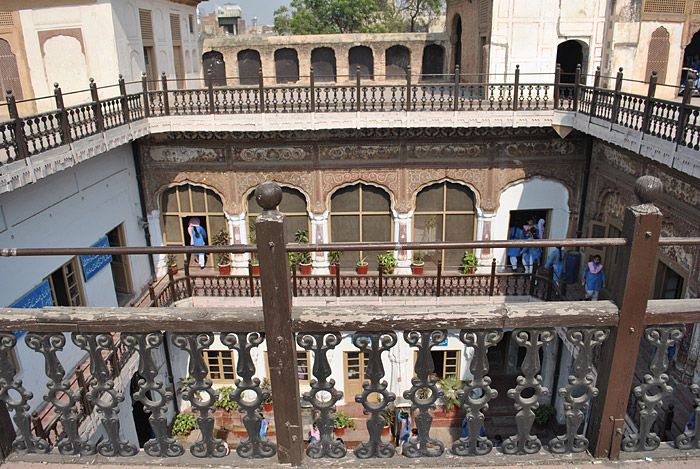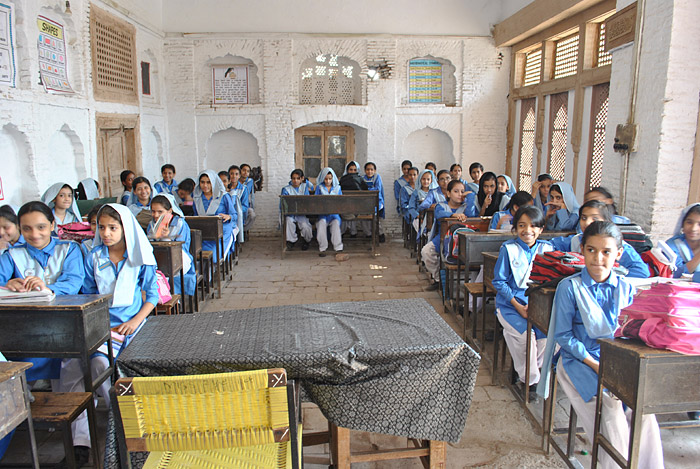Nau Nihal Singh Haveli
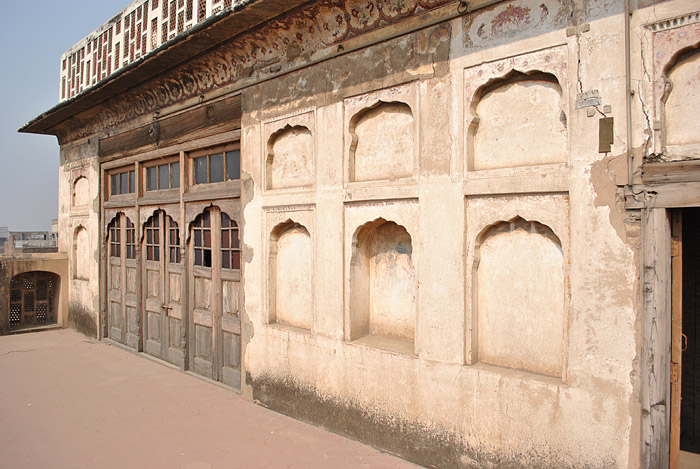
La palabra "Haveli" se usa para referirse a mansiones en India y Pakistán. La palabra se deriva de la palabra persa "hawli", que significa "un lugar cerrado". Los havelis típicamente fueron construidos por aristócratas adinerados para albergar a ellos mismos y a sus familias extendidas, y a menudo se construyeron con varios pisos de altura con uno o más patios en el interior.
El haveli de Nau Nihal Singh es quizás el más grandioso de los havelis supervivientes en Lahore. Es de planta rectangular y consta de dos niveles envueltos alrededor de un patio central. Una torre en la esquina noroeste se eleva dos pisos adicionales y ofrece una vista panorámica de Lahore desde su techo. Como el lado oeste del edificio incluye la entrada principal desde la calle, la torre se integra arquitectónicamente con el primer y segundo nivel para presentar una fachada llamativa repleta de fenestraciones salientes y detalles coloridos de la superficie.
El patrón del haveli, Nau Nihal Singh, reinó como maharajá del Punjab durante un mero mes en octubre y principios de noviembre de 1840. Había ganado el control del Imperio Sikh cuando su padre, Kharak Singh, murió a causa de los efectos del envenenamiento en 5 de noviembre de 1840. Al día siguiente, cuando Nau Nihal regresaba del funeral de su padre, un edificio se derrumbó en el camino por el que viajaba su séquito. Nau Nihal sufrió heridas leves en la cabeza y quedó inconsciente. Sus cortesanos lo llevaron a una tienda de campaña para tratar aparentemente sus heridas, pero cuando la tienda se abrió un tiempo después, se descubrió que Nau Nihal estaba muerto, con la cabeza aplastada. Aún hoy no se sabe si esto se debió a la accidente inicial o si los asesinos aprovecharon la situación para sacar a Nau Nihal del poder.
The word "Haveli" is used to refer to mansions in India and Pakistan. The word is derived from the Persian word "hawli", meaning "an enclosed place". Havelis typically were built by wealthy aristocrats to house themselves and their extended families, and were often constructed several stories high with one or more courtyards in the interior.
The haveli of Nau Nihal Singh is perhaps the grandest of the surviving havelis in Lahore. It is rectangular in plan and comprises two levels wrapped around a central courtyard. A tower at the northwest corner rises two additional stories and provides a panoramic view of Lahore from its roof. As the west side of the building includes the main entrance from the street, the tower is architecturally integrated with the first and second levels to present an eye-catching facade repleat with projecting fenestration and colorful surface detail.
The patron of the haveli, Nau Nihal Singh, reined as Maharaja of the Punjab for a mere month in October and early November, 1840. He had gained control of the Sikh Empire when his father, Kharak Singh, died from the effects of poisoning on November 5, 1840. The following day, when Nau Nihal was returning from his father's funeral, a building collapsed onto the path his entourage was travelling. Nau Nihal sustained minor head injuries and was knocked unconscious. His courtiers pulled him into a tent to ostensibly treat his injuries, but when the tent was opened some time later it was discovered that Nau Nihal was dead--his head having been smashed in. It is not known even today if this resulted from the initial accident or if assassins took advantage of the situation to remove Nau Nihal from power.
